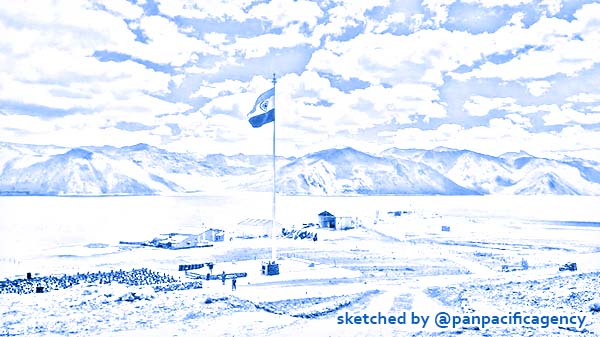India says China’s military made moves near disputed border

There has been no breakthrough in the India-China talks for disengagement in Ladakh. (PTI). Sketched by the Pan Pacific Agency.
SRINAGAR, Aug 31, 2020, AP. India said Monday its soldiers thwarted “provocative” military movements by China’s military near a disputed border in the Ladakh region months into the rival nations’ deadliest standoff in decades, China Post reported.
Local military commanders from the two countries were meeting along the disputed frontier on Monday to resolve the issues, India’s defense ministry said. It said India was committed to dialogue “but is also equally determined to protect its territorial integrity.”
The statement said China’s People’s Liberation Army on Saturday night “carried out provocative military movements to change the status quo” and “violated the previous consensus arrived at during military and diplomatic engagements” to settle the standoff in the cold-desert region.
In Beijing, foreign ministry spokesperson Zhao Lijian said border forces were communicating over recent matters but gave no details.
“Chinese border troops always act in strict compliance with the Line of Actual Control, and have never crossed the line for any activities,” Zhao told reporters at a daily briefing.
India’s defense ministry issued its statement after a gap of a day and did not give details of the nature of the new actions.
The statement said Indian troops “undertook measures to strengthen our positions and thwart Chinese intentions to unilaterally change facts on ground.”
It said the activity took place on the southern bank of Pangong Lake, a glacial lake divided by the de facto frontier between the rivals and where the India-China face off began in early May.
The disputed and undemarcated 3,500-kilometer (2,175-mile) border between India and China stretches from the Ladakh region in the north to the Indian state of Sikkim. The two Asia giants fought a border war in 1962 that also spilled into Ladakh. The two countries have been trying to settle their border dispute since the early 1990s, without success.
The ongoing standoff high in the Karakoram mountains is over disputed portions of a pristine landscape that boasts the world’s highest landing strip, a glacier that feeds one of the largest irrigation systems in the world, and a critical link to China’s massive “Belt and Road” infrastructure project.
The face off began at three places. Soldiers at Pangong Lake ignored repeated verbal warnings, triggering a yelling match, stone-throwing and even fistfights. By June it escalated and spread north in Depsang and Galwan Valley, where India has built an all-weather military road along the disputed frontier.
On June 15, the troops engaged in a nighttime clash in Galwan that was the deadliest conflict in 45 years between the nuclear-armed rivals.
According to Indian officials, Chinese troops atop a ridge at the mouth of the narrow valley threw stones, punched and pushed Indian soldiers down the ridge at around 4,500 meters (15,000 feet), leaving 20 Indians dead, including a colonel. China did not report any casualties.
Accusing each other of instigating the violence, both sides pledged to safeguard their territory but also to try to end the standoff that dramatically changed the India-China relationship.
Several rounds of military and diplomatic talks on ending the crisis have been unsuccessful.
In a symbolic move, India banned some Chinese-owned apps, including TikTok, about two weeks after the deadly clash, citing privacy concerns that it said pose a threat to India’s sovereignty and security.
On Saturday, India pulled out of multinational military exercise organized by Russia in which China and Pakistan, India’s bitter rival, are also participating. India apparently cited the coronavirus pandemic but experts say the decision to pull out from the exercise was because of its raging territorial dispute with Beijing.